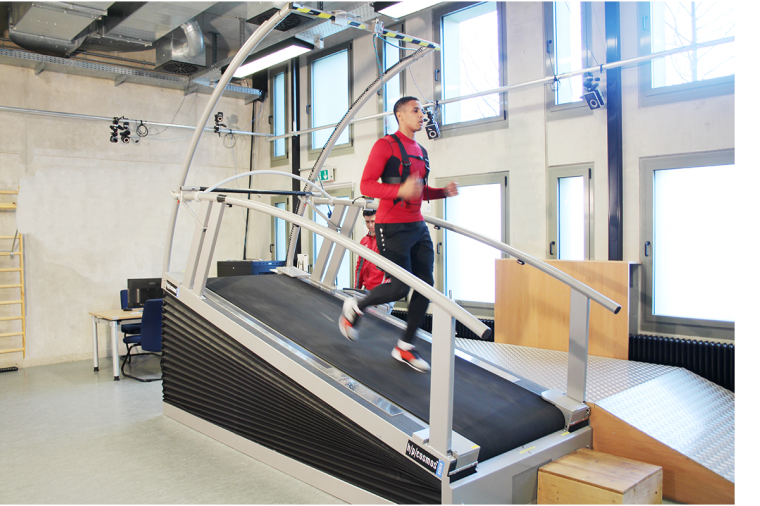Everyone is well aware that uphill and downhill runs are different. Just think about your last hiking tour up the mountain and back down again. The Journal of Sports Science recently published a study by Marcel Lemire and team from the University of Strasbourg, France, exploring the effects of downhill running on trail runners.
While uphill running predominantly requires concentric muscle actions, downhill running is known to require preferentially eccentric muscle actions for the lower limb muscles. Muscle damage and muscle soreness (DOMS) is likely to happen after repeated unaccustomed eccentric movements and indicates the high muscular demands. At the same time, the energy costs of downhill running are much smaller (lower in heart rate, oxygen uptake and ventilation). For this reason eccentric endurance training on a treadmill has also become a well suited training method for patients with coronary heart disease CHD (or coronary artery disease CAD).
Since many decades h/p/cosmos treadmills enable researchers, trainers and therapists around the globe to perform downhill walking as well as running on treadmills of all sizes - always safe due to the safety arch with harness and fall-stop security!
Source:
Lemire, M., Remetter, R., Hureau, T. J., Kouassi, B. Y., Lonsdorfer, E., Geny, B., ... & Dufour, S. P. (2020). "High-intensity downhill running exacerbates heart rate and muscular fatigue in trail runners."
Journal of Sports Sciences, 1-11.“

